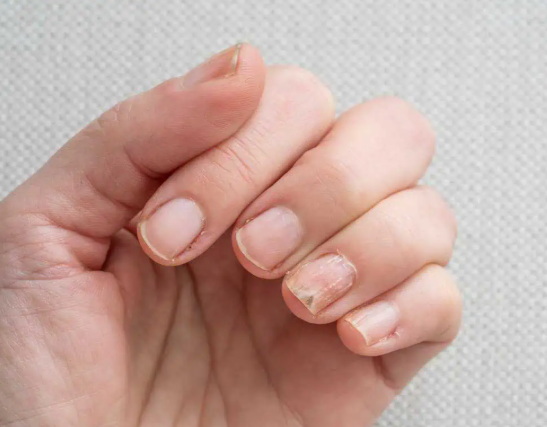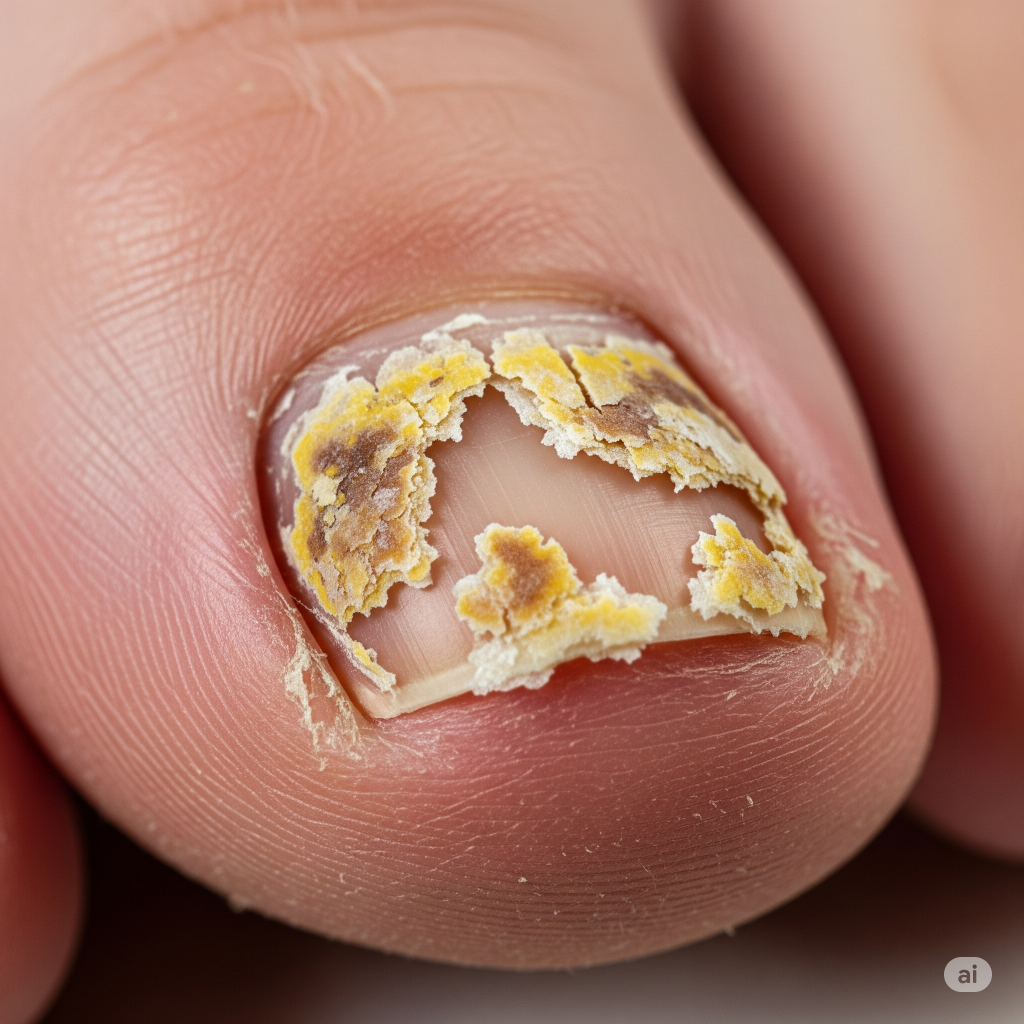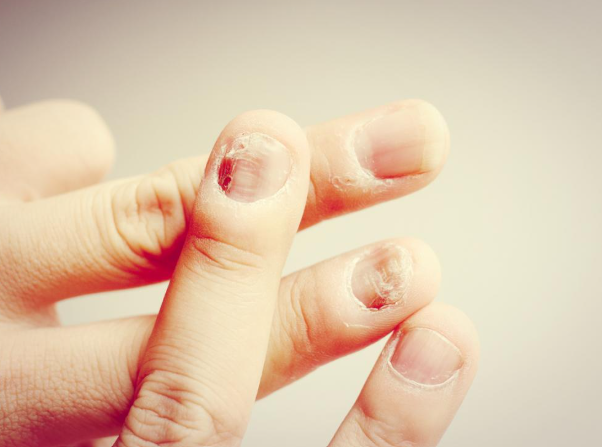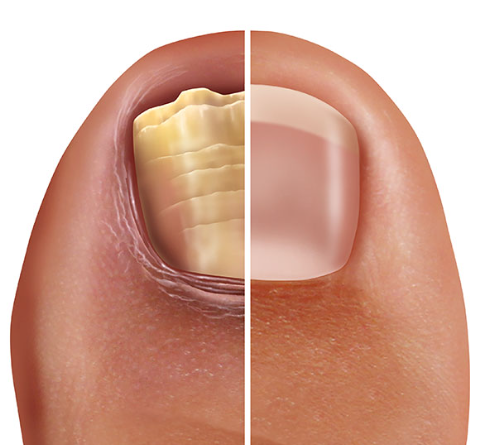Onychomycose (Nail fungal infections), medically called onychomycosis, are infections of the fingernails or toenails caused by fungi (dermatophytes, yeasts, or molds). They make nails thick, brittle, discolored, and sometimes painful. Toenails are more commonly affected than fingernails.

Causes:
- Athlete’s foot: The fungus that causes athlete’s foot can spread to the nails.
- Exposure to moisture: Prolonged exposure to a humid environment, such as frequently wet hands or feet, can create an ideal environment for fungi to grow.
- Trauma to the nail: Small injuries to the nail or surrounding skin can allow fungi to enter.
- Medical conditions: People with diabetes, poor circulation, or a weakened immune system are more susceptible.
- Age and gender: Onychomycosis is more common in older adults and in men.
- Shared spaces: The infection can be contracted by walking barefoot in public places like swimming pools, locker rooms, and saunas, or by sharing nail care tools.
Symptoms:
- Discoloration: The nail may turn white, yellow, black, or green.
- Thickening: The nail can become abnormally thick.
- Brittleness: The nail may become brittle, crumbly, or fragile.
- Separation: The nail may lift or separate from the nail bed.
- Debris: There can be a buildup of debris underneath the nail.
- Shape change: The nail’s shape may become distorted.
- Odor: A foul smell can come from the infected nail.
Treatment :
- Oral Antifungal Medications: These are often considered the most effective treatment, especially for more severe cases. Examples include terbinafine and itraconazole. These medications require a prescription and a long treatment period (several weeks to several months). They may also have potential side effects and can interact with other medications, so liver function may need to be monitored.
- Topical Treatments: Medicated nail polishes or solutions containing antifungals like ciclopirox or amorolfine can be used. These are generally less effective than oral medications but can be used for less severe infections or in combination with oral treatment. It’s important to apply these regularly until a healthy nail has grown out, which can take a long time.
- Other Methods: In some cases, a doctor may recommend surgically removing the infected part of the nail or using laser therapy.

To help manage the infection and prevent recurrence, it’s also recommended to:
- Keep your feet and hands dry.
- Keep your nails clean and trimmed.
- Do not share nail clippers or other nail care tools.
- Avoid walking barefoot in public, wet areas like pools and locker rooms.

